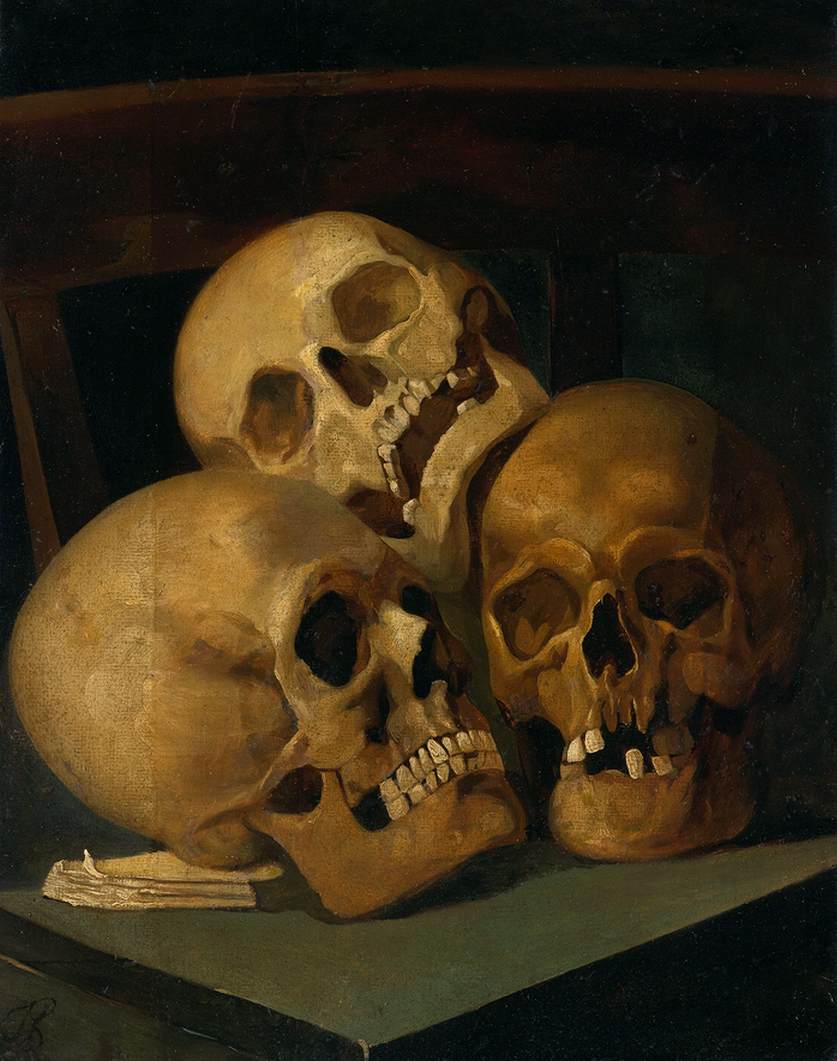Description
The Still-Life of Three Skulls painting by Belgian artist Henri Leys is an impressive work that combines elements of realism and symbolism in an intriguing and evocative composition. The work, which measures 52 x 40 cm, presents three human skulls placed on a wooden table, surrounded by objects such as a book, a candle and a vase.
Leys' artistic style is characterized by his attention to detail and his ability to create a mysterious and evocative atmosphere. In this work, the texture of the skulls and the wood of the table are rendered with impressive precision, while the surrounding objects are painted with a softer, more diffuse touch. The composition of the work is particularly interesting, as the skulls are arranged in a triangular shape that evokes the idea of death as a constant and ominous presence.
The use of color in the painting is also notable. Leys uses a dark, somber palette, with shades of brown, gray, and black predominant. However, there are small touches of color in the work, such as the red candle and the blue vase, which add a touch of visual interest and symbolism.
The history of painting is fascinating. It was painted in 1867, during a period when Leys was interested in religious and symbolic iconography. The work has been interpreted in many ways, from a reflection on human mortality to a social critique of hypocrisy and corruption in society.
A little-known aspect about the work is that it was influenced by the Dutch vanitas tradition, which centered on the idea that life is fleeting and ephemeral. Leys took this idea and reinterpreted it in his own style, creating work that is both timeless and deeply moving.

